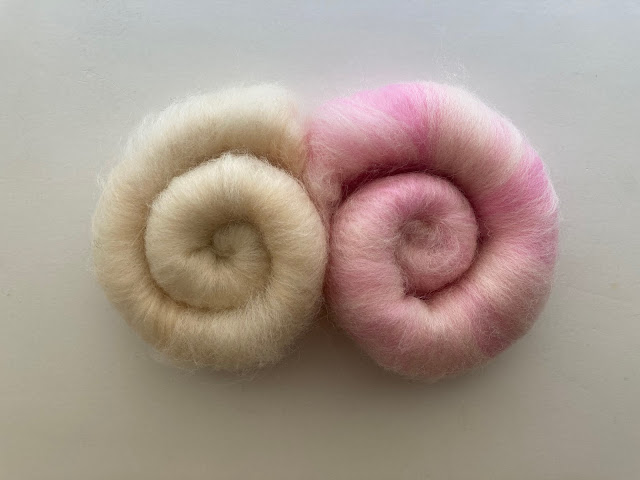In my quest for the best sustainable fibers for my fabrics and yarns, I have been reading much hype about Bio Nylon Fiber. So much hype, in fact, that I had to try it out for myself. So what is Bio Nylon? Basically, Nylon-6 is made of crude oil that produces the molecule caprolactam; Bio Nylon is created by fermenting plant sugars that produce caprolactam which is turned into biodegradable nylon, which breaks down in our landfills within five years. You can read more about this process HERE.
I wanted to see how easy it is to work with Bio Nylon and is it a good blending source for wool fiber. I purchased four Bio Nylon colors but only used two in this experiment.
I didn't use my drum carder but instead used my blending board for this process. First, I blended beige Bio Nylon and white wool, then I blended white wool and pink Bio Nylon.

Blending the two fibers actually worked pretty well. Spinning the fibers together took a moment to get used to. Though Bio Nylon fiber feels like wool, it is NOT like wool. Drafting the fibers isn't as smooth as drafting wool fiber, but it worked, and the fibers spun together perfectly.
Now for the meat and potatoes of this experiment. Do I think this fiber is the future of design? Yes, I do. I believe large manufacturing firms will start to switch over to this fiber only because the "sustainable" catchword will bring in the big bucks in the short term. Do I believe this fiber is the solution to our fast fashion problems? No, I don't! You have to remember that it takes a lot of natural resources to create both nylon and bio-nylon. Also, we need to address the unwanted fibers that are currently in our fashion waste stream.
To sum things up, will I use this fiber as a blending agent in my yarns? Yes, I will only because it breaks down fast and it's easy to use. Will I break my back to make this fiber a staple in my designs... well, no. I need to work with lots of discarded fibers to remove them from the waste stream. This is a good step into the future of fashion and design, but it's a small step. We need bigger steps toward this large problem, the problem with fast fashion.




